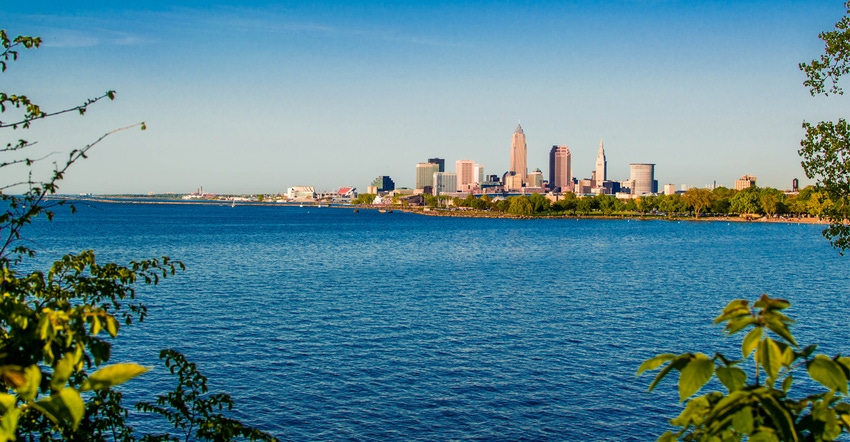March 12, 2018

Michigan now has a final version of a plan to improve water quality in Lake Erie. It targets specific actions to achieve a 40% phosphorus reduction goal by 2025, which was also established as a Michigan Water Strategy priority measure by Gov. Rick Snyder.
The plan, which was jointly created by the Michigan departments of Environmental Quality, Agriculture and Rural Development, and Natural Resources, incorporates public comments received following the June release of the state’s draft Lake Erie Domestic Action Plan (DAP).
The final DAP provides a more detailed implementation timeline and identifies how each agency will be reporting its progress. It also outlines three main goals that are consistent with the federal plan rolled out by the EPA:
• minimize the extent of oxygen-depleted zones in the waters of the central basin of Lake Erie
• maintain healthy animal and plant life in the western and central basins
• maintain cyanobacteria (blue-green algae) levels that do not produce concentrations of toxins
It includes continuing to tighten sewage treatment facility permits, targeting Michigan’s portion of the Maumee River and River Raisin watersheds for phosphorus reduction, increasing research on soluble reactive phosphorus, widening farmer technical assistance for best management practices, and continuing outreach and education around Lake Erie.
Gordon Wenk, director of the Michigan Department of Agriculture and Rural Development, says, “The causes of algal blooms are complex, and Michigan’s Domestic Action Plan underscores the need to take a holistic approach to improving water quality in the lake. Our plan will show the measurable steps being taken on several fronts including implementation of agriculture best practices, improvements to wastewater treatment, improving street [and] storm water runoff controls, and the restoration of wetlands. There’s no quick, easy fix, but through collaboration and commitment, we will see improvements.”
Algae are simple, non-flowering plants that are a natural part of freshwater and ocean ecosystems. Not all algae cause harm, but overgrowth can indicate a disruption in the ecosystem. Too much phosphorus, a nutrient that accelerates algae growth, has been identified as one cause of persistent, intense algal blooms in the western part of Lake Erie. As the warmest and shallowest Great Lake, Lake Erie, especially its western basin, is vulnerable to algal blooms, which can threaten ecological health and drinking water quality.
“The Great Lakes are among Michigan’s most defining and treasured natural resources,” says DNR Director Keith Creagh. “Integrating this plan into the long-term management of Lake Erie will ensure that it remains a viable source of drinking water, as well as a clean, safe recreation destination for the region’s residents and visitors.”
Improving Lake Erie is important to Michigan and the Great Lakes region. Commitment to making change is embedded in several supporting Great Lakes management plans, including the Western Lake Erie Basin Collaborative Agreement signed by Michigan, Ohio and Ontario.
“Lake Erie is one of our treasured Great Lakes, and it provides significant recreational opportunities for Michiganders as well,” says C. Heidi Grether, director of the Michigan Department of Environmental Quality. “Utilizing an all-encompassing and collaborative approach like the Michigan’s Domestic Action Plan provides a viable adaptive framework to further limit phosphorus and work across urban and rural sources to address water quality issues.”
The final Lake Erie Domestic Action Plan will be integrated into a larger comprehensive plan, that combines plans from nearby Great Lakes states, the province of Ontario, and the U.S. and Canadian governments.
For more information, visit michigan.gov/deqgreatlakes.
Source: Michigan Department of Agriculture
You May Also Like




